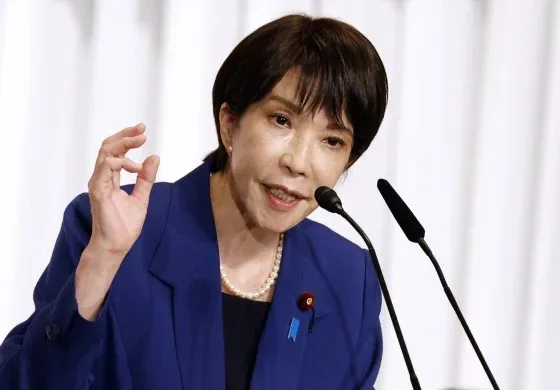

Japan on Verge of First Female Prime Minister with Takaichi's Victory
Japan is poised to make history by appointing its first-ever female prime minister after Sanae Takaichi, a staunch conservative and veteran politician, won the leadership of the ruling Liberal Democratic Party (LDP). Her victory in a hard-fought contest is a landmark moment for gender representation in Japanese politics, but it also signals a continuation of the traditionalist policies championed by her late mentor, former Prime Minister Shinzo Abe.
A Decisive Win at a Critical Time
The 64-year-old Takaichi secured the party leadership by defeating her main rival, the more moderate Shinjiro Koizumi, in a five-way race. Her election comes at a pivotal moment for the LDP, which is battling to restore public trust that has been eroded by economic anxieties, most notably the soaring cost of living. "Rather than being happy, I feel like the tough work starts here," Takaichi acknowledged following her win, signaling her awareness of the significant challenges ahead.
With the LDP holding a majority, her confirmation as prime minister by a parliamentary vote on October 15 is seen as a formality. She will succeed the outgoing Shigeru Ishiba, whom she lost to in a previous leadership run-off, marking a dramatic political comeback.
A Conservative Trailblazer
While her ascent to the premiership will break one of Japan's highest glass ceilings, Takaichi's political ideology is deeply rooted in conservatism. An open admirer of former British Prime Minister Margaret Thatcher, she has built her career as a steadfast proponent of Shinzo Abe's nationalist vision for Japan.
Her policy positions reflect this traditionalist stance. She is a vocal supporter of maintaining a male-only line of succession for the imperial family and opposes progressive social reforms such as legalizing same-sex marriage. She also resists changes to a 19th-century civil code that effectively requires married women to give up their surnames. These positions place her at odds with a growing public desire for social change, creating a complex dynamic for her leadership.
The Long Road for Women in Japanese Politics
Takaichi's victory is particularly significant given the stark underrepresentation of women in Japanese governance. Currently, women occupy only around 15 percent of the seats in the powerful lower house of parliament, and just two of the country's 47 prefectures are led by female governors. Her rise to the top job is a monumental achievement in a political landscape that has long been dominated by men.
A long-serving parliamentarian from her hometown of Nara, Takaichi is no stranger to high office, having previously held several key cabinet positions, including minister for economic security, internal affairs, and gender equality. Her supporters will see her as a strong, experienced leader ready to steer the country, while her critics will be watching closely to see how her conservative social agenda shapes the nation's future.